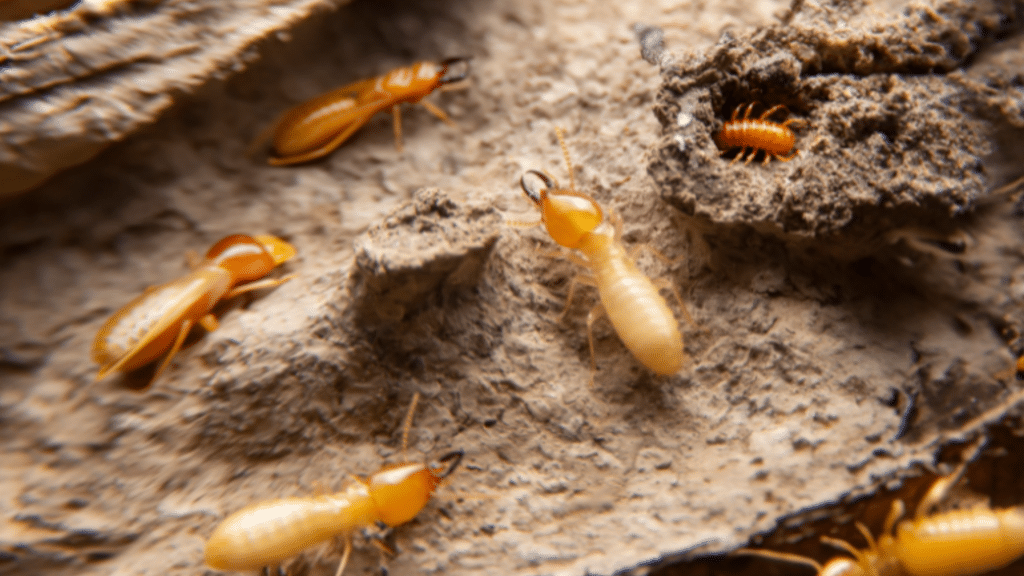Have you ever spotted small insects around your home and immediately panicked, thinking they might be termites?
You’re not alone! Termites cause billions in property damage annually, but many harmless bugs are mistaken for these destructive pests.
What makes identification so tricky? From flying ants to powderpost beetles, several insects share similar physical characteristics with termites, like size, color, and even behavior. This confusion can lead to unnecessary worry or inappropriate treatment methods.
In this blog, we will examine common insects often confused with termites and provide simple tips for telling them apart.
Understanding Bugs and Termites
Here’s how to tell termites apart from similar-looking bugs in a simple side-by-side comparison.
| Feature | Termites | Look-alike Bugs |
|---|---|---|
| Antennae | Straight | Bent or elbowed (e.g., ants) |
| Waist | Thick and uniform | Narrow or pinched (especially ants) |
| Wings (if present) | Two pairs, same size | Two pairs, front wings longer than back wings |
| Color | Creamy white or light brown | Varies: black, brown, or pale |
| Behavior | Eat wood from the inside out | May nest in wood but rarely eat it |
| Damage signs | Mud tubes, hollow wood, discarded wings | Frass (sawdust), surface damage, no tubes |
Bugs That Look Like Termites (But Aren’t)
Many insects resemble termites at a glance, especially during the swarming season. Bugs like carpenter ants, flying ants, powderpost beetles, and booklice can confuse homeowners due to their similar color, size, or wood-damaging behavior.
However, most of these bugs either don’t cause structural damage or have distinct features like bent antennae, narrow waists, or fast movements.
Identifying these impostors correctly helps prevent unnecessary treatments and ensures the right pest is addressed.
What Termites Really Look Like?
Termites are soft-bodied, pale insects with straight antennae and thick waists. Swarming termites have two pairs of equal-length wings and are often confused with flying ants.
Unlike most lookalikes, termites are serious wood destroyers, silently eating from the inside out. Common signs include mud tubes, hollow-sounding wood, and discarded wings.
Early detection is key to preventing expensive structural damage. Let’s examine some bugs that resemble termites.
1. Carpenter Ants
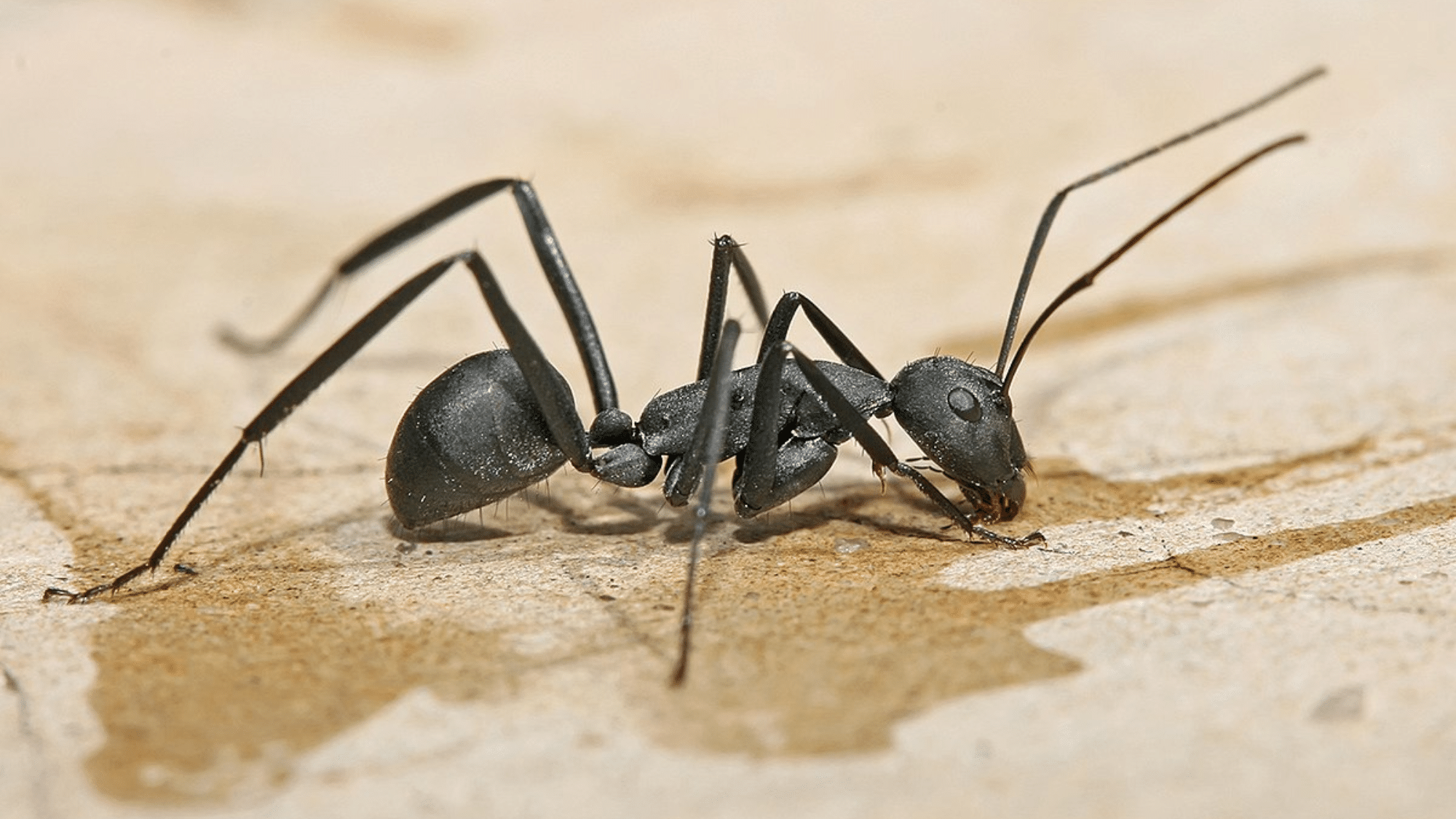
Carpenter ants are large, black or reddish ants that chew through wood to build nests, not for food like termites. They can cause structural damage over time, but tend to hollow out moist or decaying wood.
| Feature | Description |
|---|---|
| Color | Black or red |
| Antennae | Elbowed |
| Waist | Pinched |
| Wings (if any) | Unequal size, longer front pair |
Do you know
- Carpenter ants don’t eat wood; they just excavate it for nesting.
- They’re one of the largest common ant species in North America.
- You can hear faint rustling noises from active nests inside walls.
2. Flying Ants
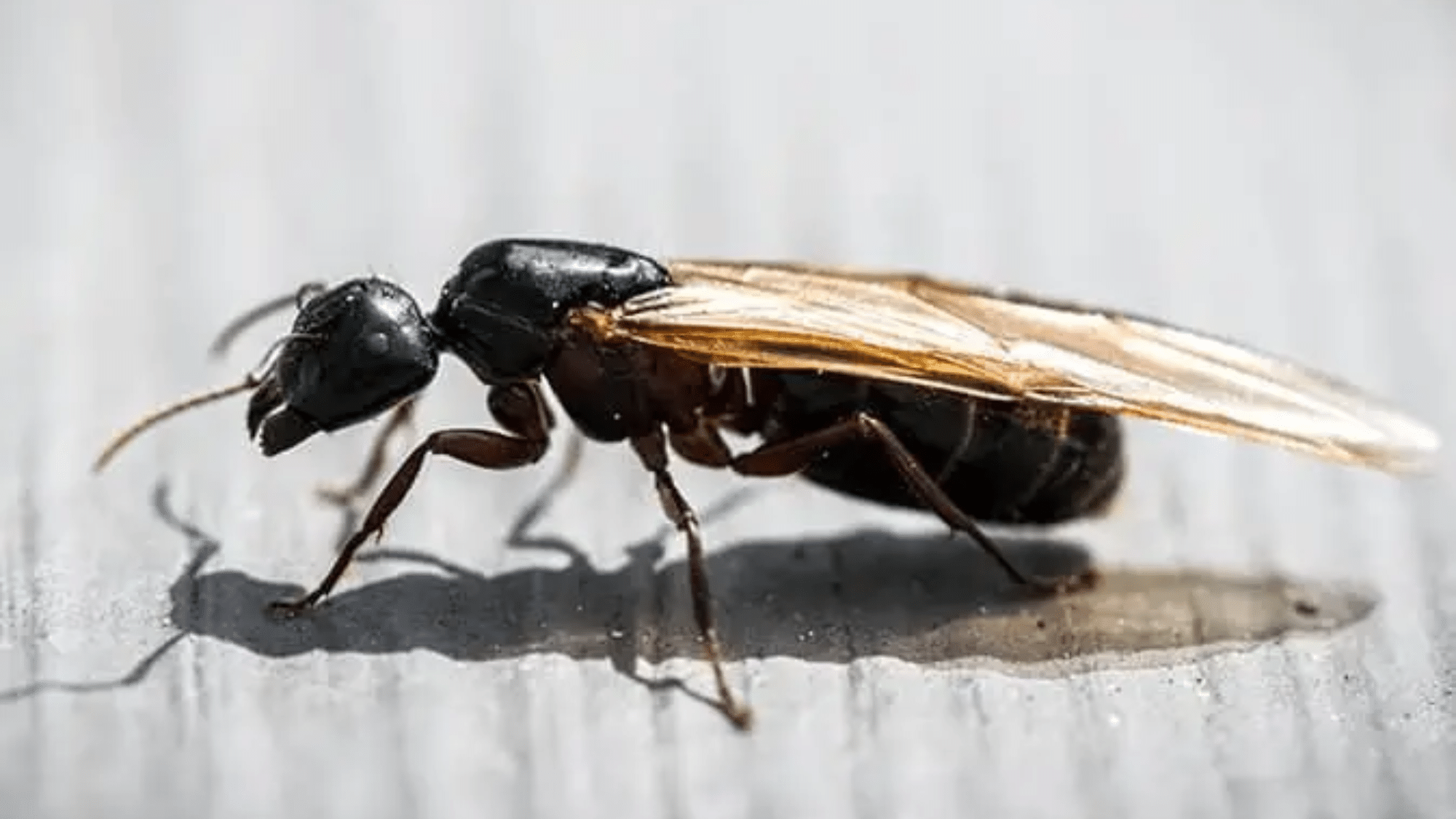
Flying ants appear during mating season and often get mistaken for termite swarmers due to their wings. However, their wing shape and body structure set them apart.
| Feature | Description |
|---|---|
| Color | Dark brown or black |
| Antennae | Elbowed |
| Waist | Pinched |
| Wings | Unequal length (front longer) |
Unique Facts
- Flying ants swarm once a year, often after rain.
- They can shed their wings after mating, just like termites!
- Swarming ants are future queens and kings of new colonies.
3. Powderpost Beetles
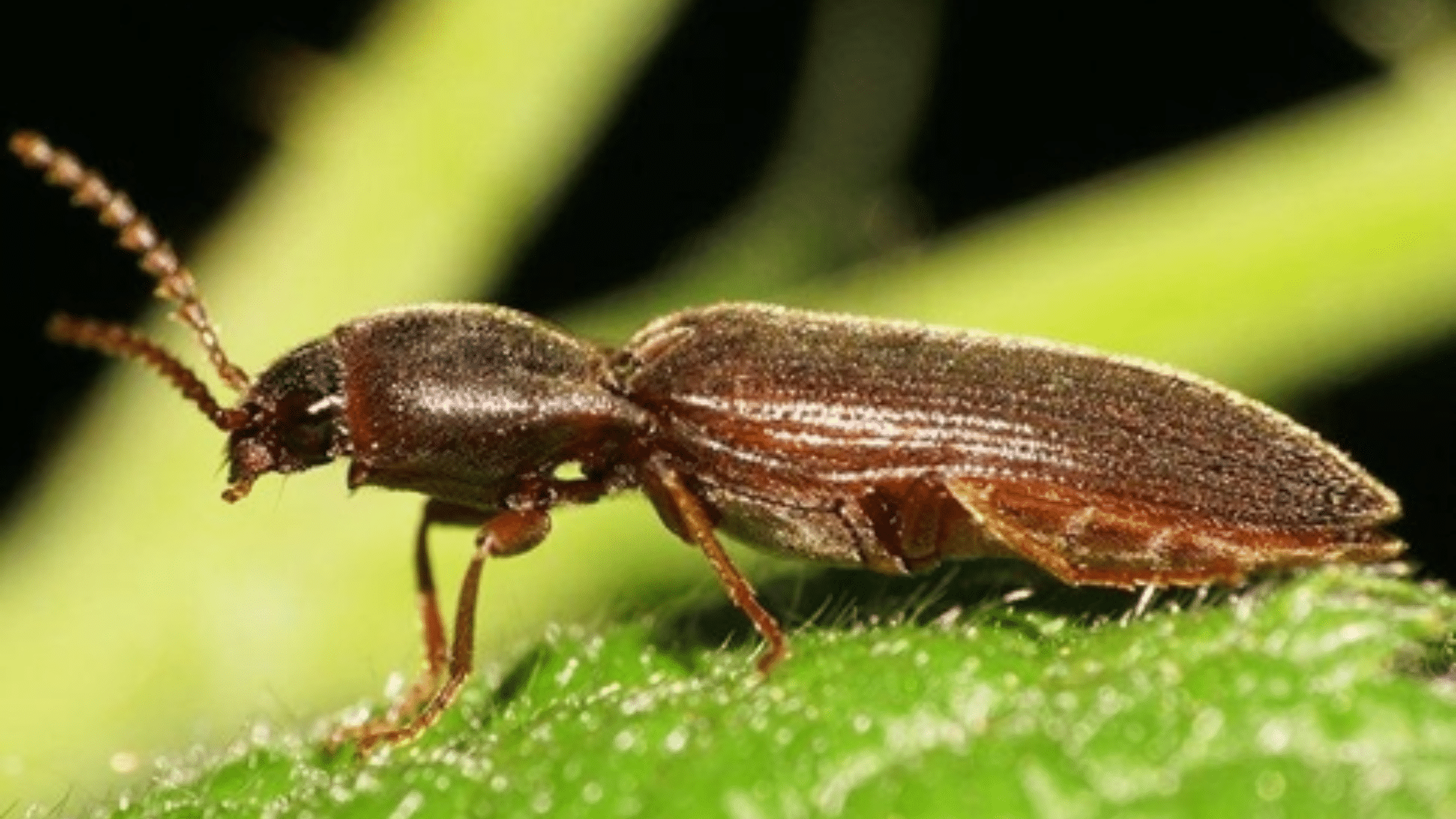
These small beetles bore into wood and leave behind powdery frass (sawdust), which can be mistaken for termite damage. However, they create round exit holes, unlike termites.
| Feature | Description |
|---|---|
| Color | Reddish-brown to black |
| Antennae | Straight, clubbed |
| Body Shape | Long and narrow |
| Wings | Hard wing covers (beetle shell) |
Amusing Details
- They lay eggs inside cracks of wood, and larvae do the damage.
- Frass looks like fine talcum powder.
- They’re often found in hardwood flooring and furniture.
4. Acrobat Ants
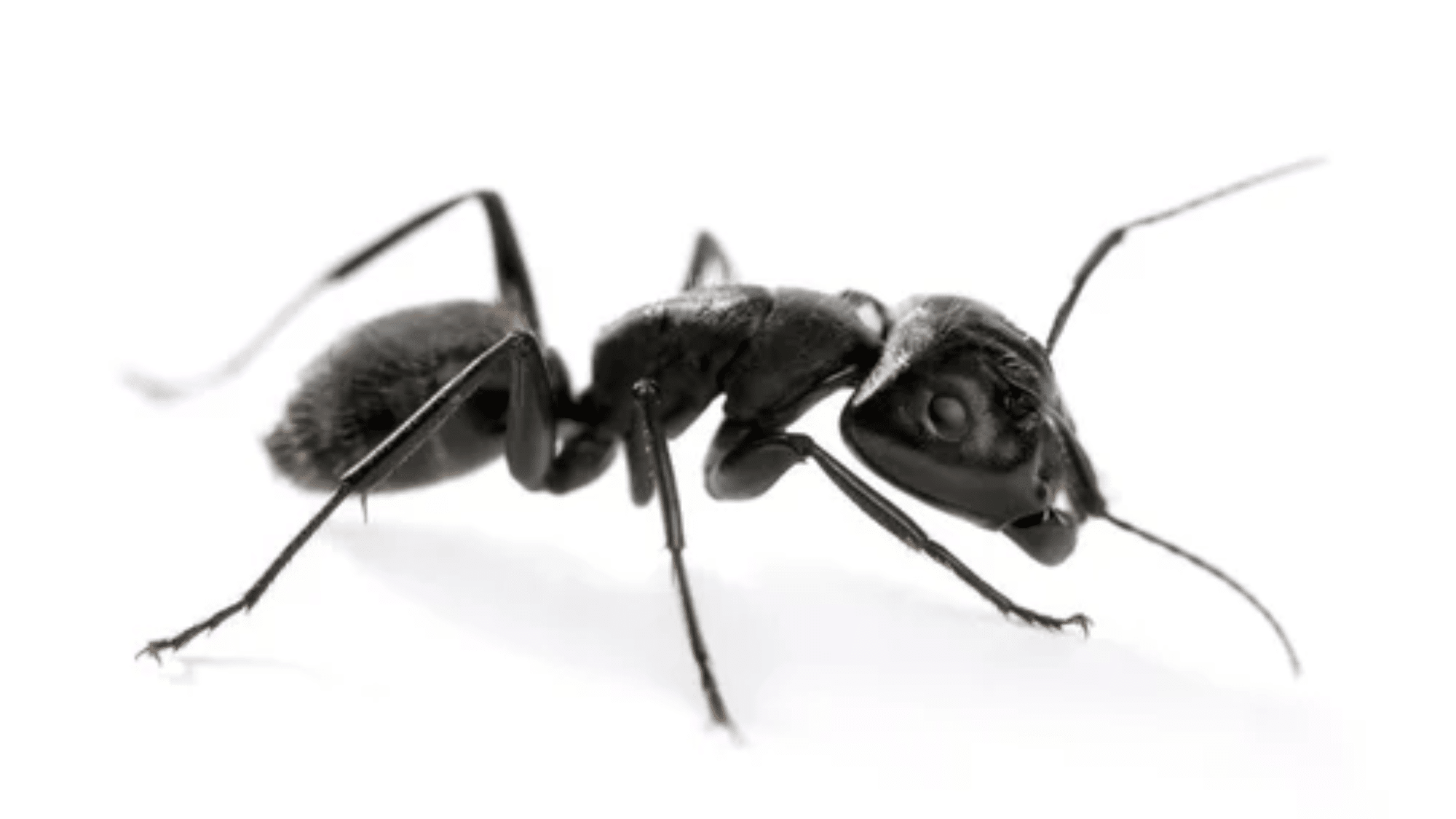
Acrobat ants nest in wood, especially in damaged or termite-infested areas. They raise their heart-shaped abdomens above their heads when threatened.
| Feature | Description |
|---|---|
| Color | Light brown to black |
| Antennae | Elbowed |
| Waist | Very narrow |
| Body Shape | Heart-shaped abdomen |
Interesting Facts
- Named for their ability to acrobatically raise their abdomen.
- They give off a foul smell when disturbed.
- Often invade termite galleries and take over their nests.
5. Booklice
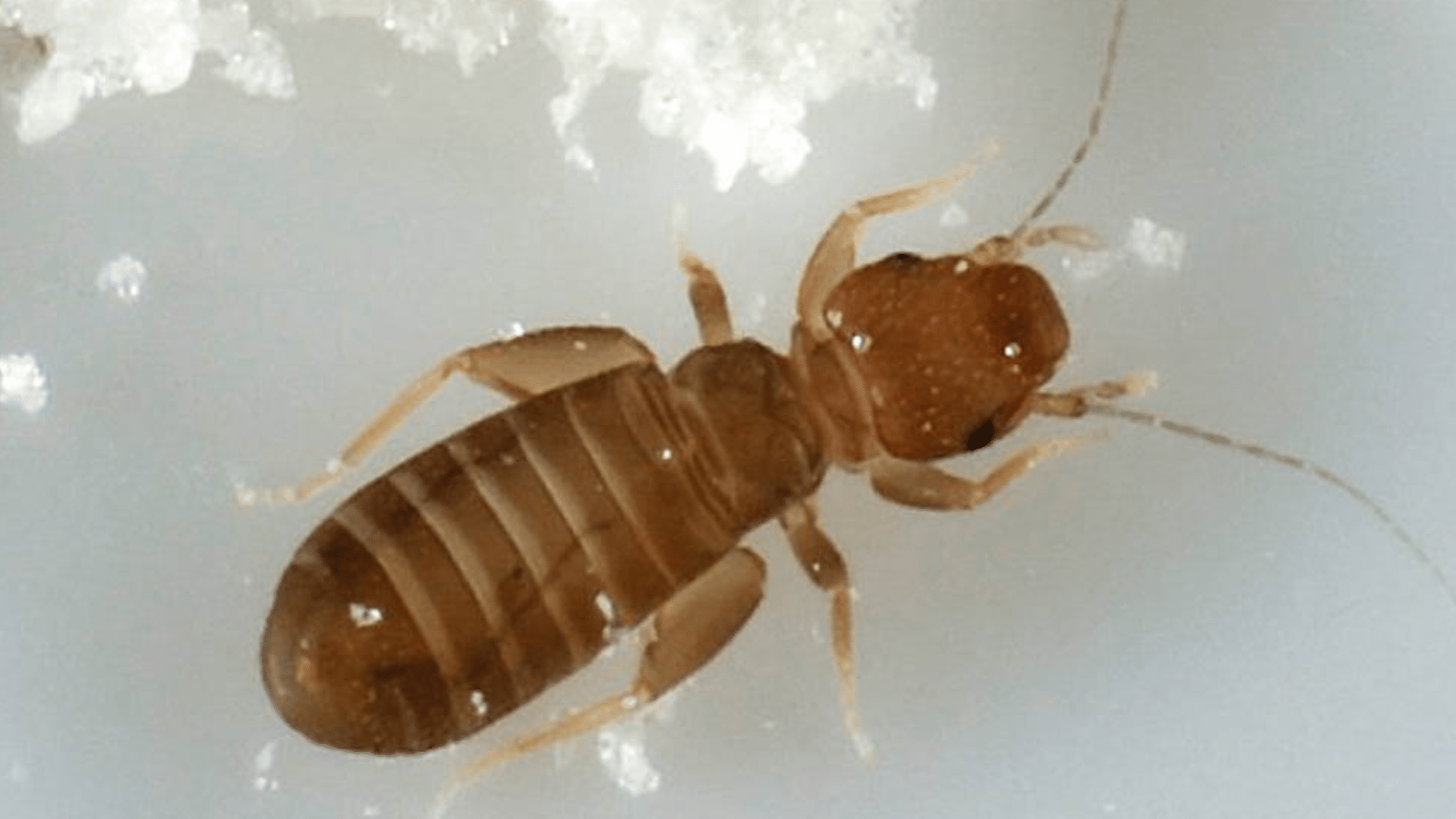
Booklice are very small insects that thrive in moist environments. Their pale, soft bodies can resemble young termites, but they feed on mold, not wood.
| Feature | Description |
|---|---|
| Color | Pale white or light gray |
| Size | 1–2 mm (very tiny) |
| Wings | Most are wingless indoors |
| Body Shape | Soft-bodied, oval |
Fun Insights
- They’re harmless and don’t bite or damage wood.
- Common in old books, hence the name.
- Their presence usually indicates excess moisture.
6. Springtails
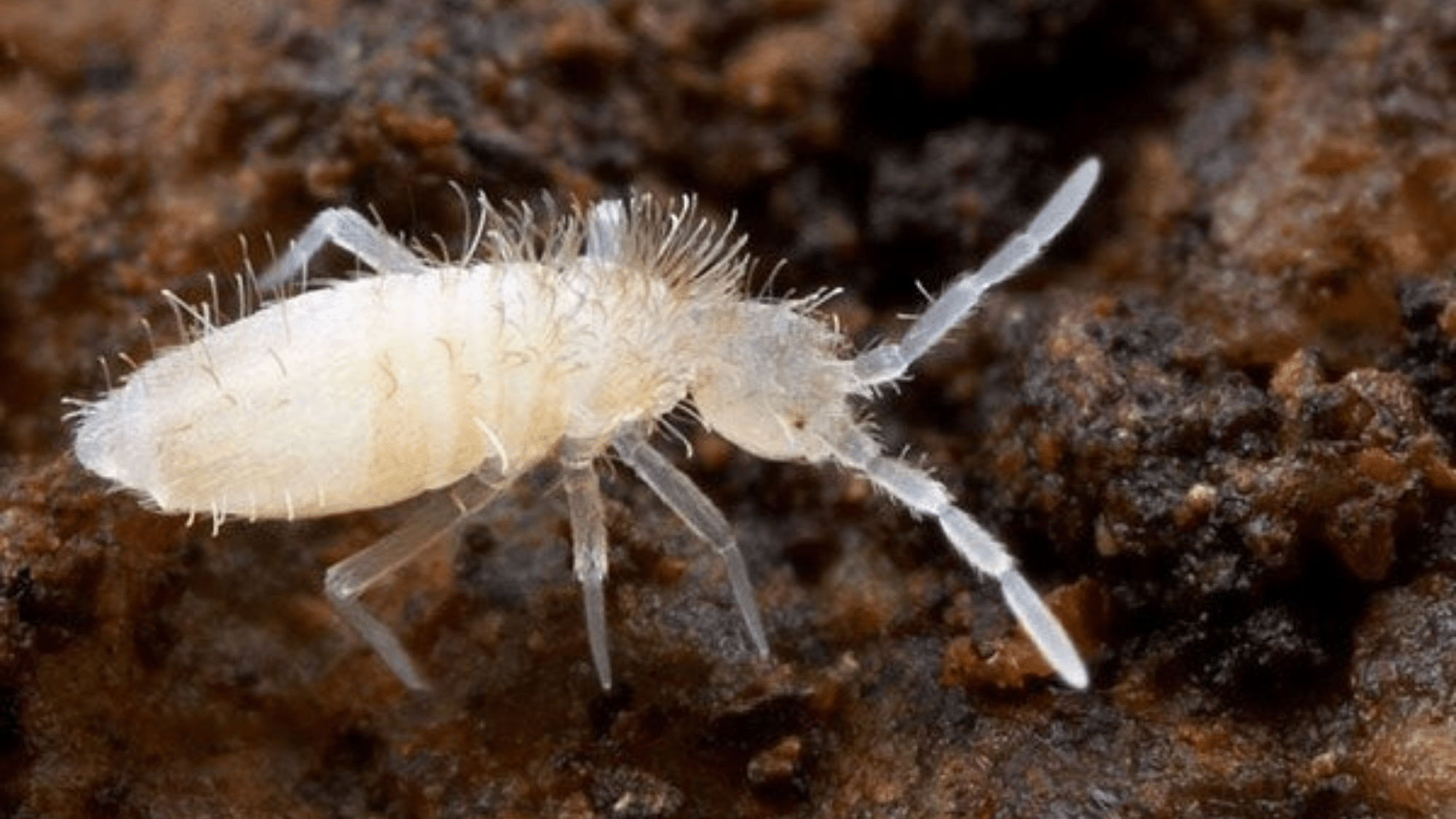
Springtails are moisture-loving insects that use a tail-like structure to jump. Their small size and pale color often confuse people into thinking they’re termites.
| Feature | Description |
|---|---|
| Color | White, gray, or dark-colored |
| Size | 1–2 mm |
| Antennae | Straight |
| Movement | Jump using the furcula (tail-spring) |
Remarkable Points
- They can “spring” up to 100 times their body length.
- Often found near sinks, tubs, and leaky walls.
- They help break down organic matter in soil.
7. Maggots
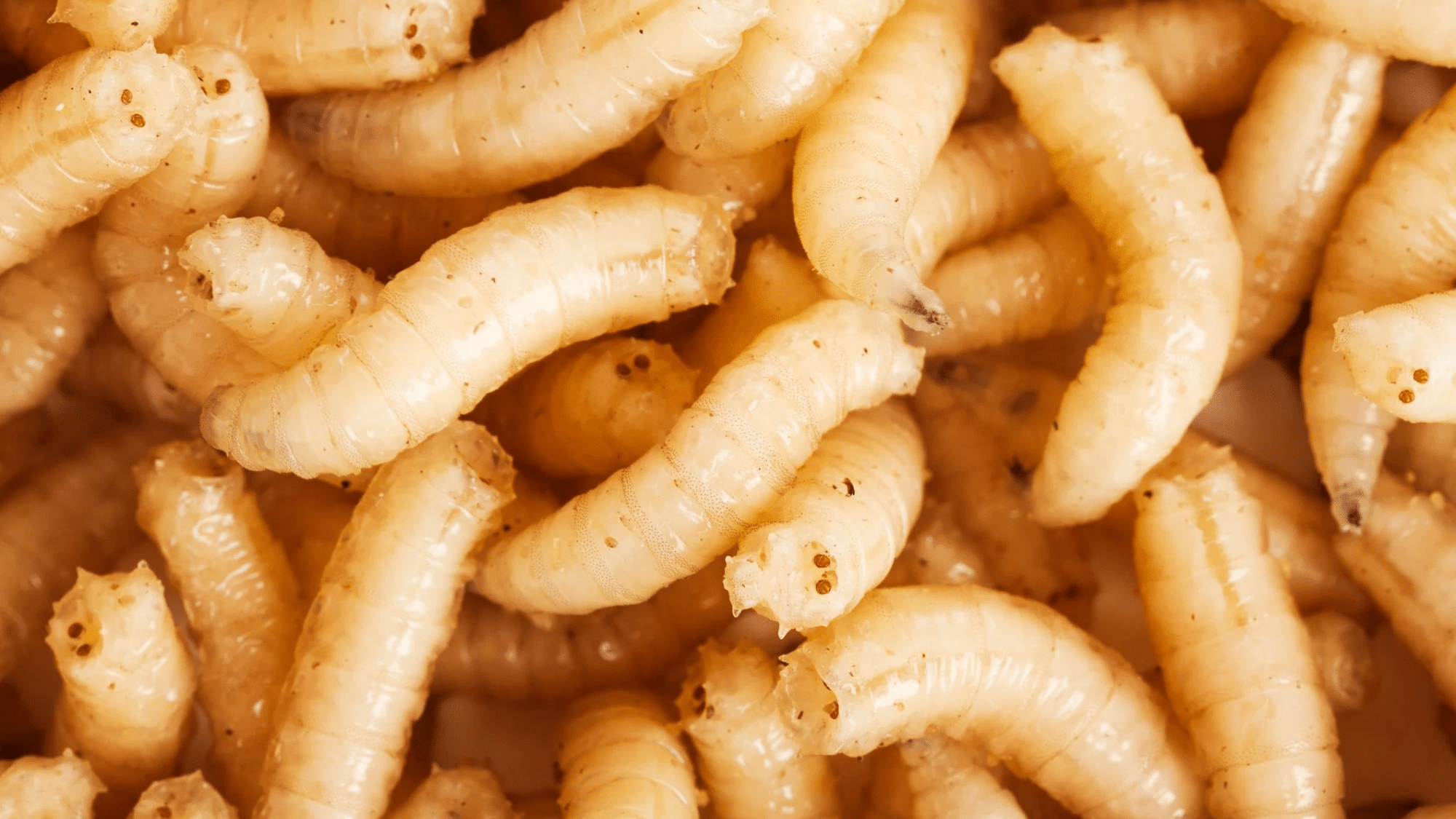
Maggots are the larvae of flies. Their white, worm-like bodies can resemble baby termites, but they don’t infest wood or structures.
| Feature | Description |
|---|---|
| Color | Creamy white |
| Legs | None |
| Body Shape | Cylindrical, soft-bodied |
| Wings | None (larval stage) |
Fun Facts
- Maggots are used in medical therapy to clean wounds.
- They develop into flies within a few days.
- Found near rotting food or dead organic material.
8. Earwigs
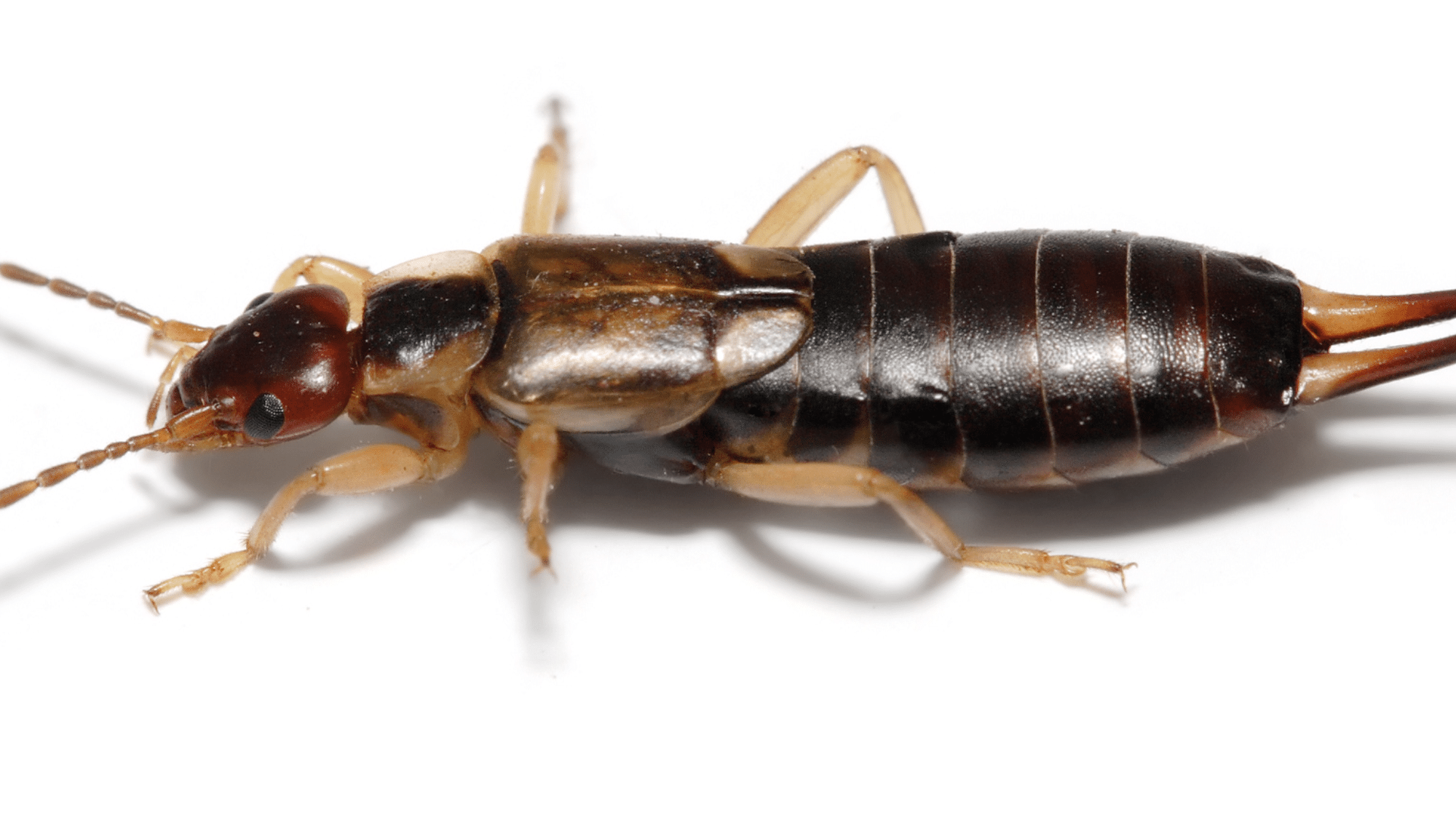
Earwigs have long bodies with noticeable pincers at the end. Though intimidating, they don’t eat wood and are easy to distinguish from termites.
| Feature | Description |
|---|---|
| Color | Brown to reddish |
| Antennae | Long and thin |
| Body Shape | Flattened, with pincers |
| Wings | Short, folded under wing covers |
Curious Facts
- Their pincers are mostly for defense, not biting humans.
- Earwigs rarely fly, though they have wings.
- They’re more active at night and like moist areas.
9. Silverfish
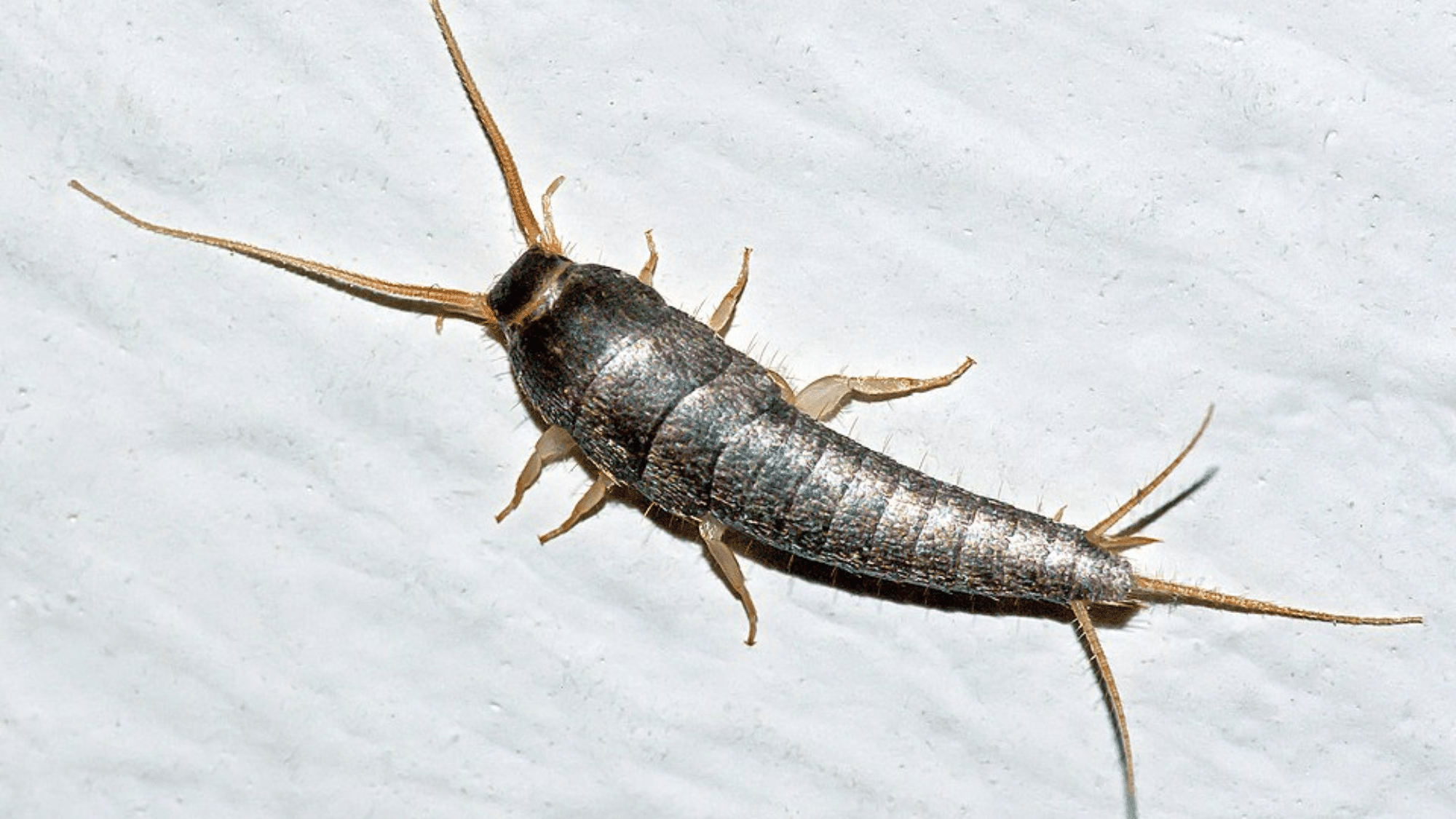
Silverfish are fast-moving, silver-gray insects with a fish-like wiggling motion. Though often seen in damp areas, they don’t damage wood structurally.
| Feature | Description |
|---|---|
| Color | Silvery gray |
| Body Shape | Tapered, carrot-shaped |
| Movement | Quick, wiggling motion |
| Tail | Three long bristles at the rear |
Fun Facts
- Silverfish can live for years and go months without food.
- They love paper, glue, and starchy materials.
- Their movements mimic the wiggle of a fish.
Signs of Termite Presence
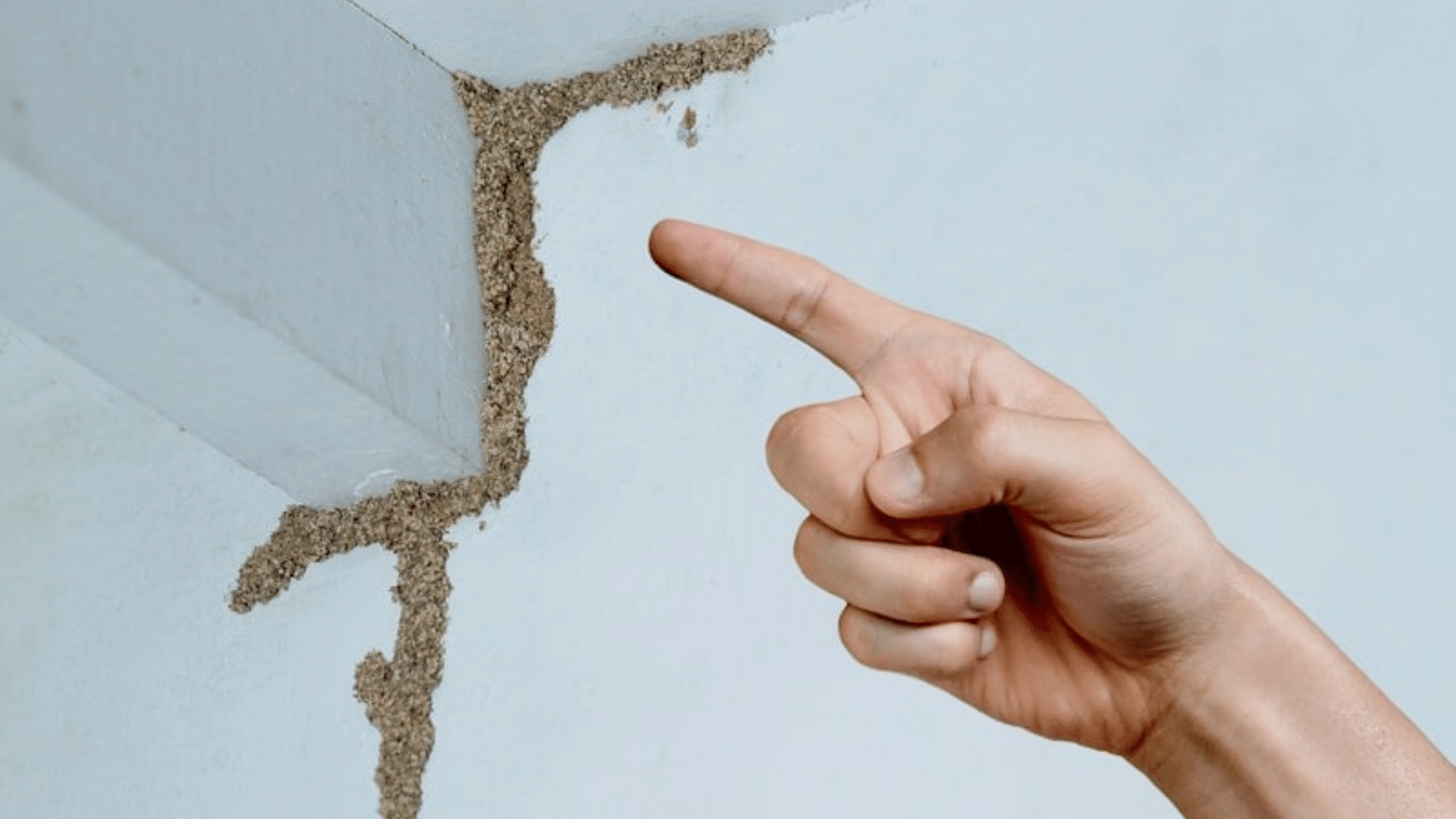
Here are some of the signs you should look for:
- Mud Tubes: Thin, mud-lined tunnels on walls, foundation, or crawlspace.
- Hollow Wood: Tap wooden beams or floors; hollow or papery sounds may mean damage.
- Discarded Wings: Found near windowsills, doors, or light fixtures after swarming.
- Frass (Droppings): Looks like small wood-colored pellets, usually from drywood termites.
- Bubbling or Peeling Paint: May indicate moisture from termites tunneling underneath.
Behavior to Watch
1. Termites avoid light and open air, so they usually stay hidden.
Termites thrive in dark, moist environments and rarely come out in the open. To stay protected, they travel through mud tubes or tunnels inside wood, which keeps them away from light and predators. This makes them hard to detect until damage is already done.
2. Swarmers (reproductive termites) appear in spring or after rain.
Swarmers are winged termites that leave the colony to start new ones. They usually appear during warm weather, especially after rain, when humidity is high. Seeing a swarm indoors or discarded wings near windows is often one of the first visible signs of a termite problem.
3. They move slowly and often in groups when exposed.
When termites are accidentally uncovered, like during renovations or inspections, they typically move sluggishly and stick close together. Unlike ants, they don’t scatter quickly or show aggressive behavior, which helps tell them apart from other bugs.
Tip: If you spot any of these signs or insects, take pictures and contact a pest professional for confirmation and treatment options.
Final Thoughts
While termite lookalikes may cause momentary alarm, being able to correctly identify these insects can save you stress, time, and money.
Remember that proper identification is the first step toward appropriate pest management. When in doubt, consider consulting a professional entomologist or pest control expert who can provide a definitive identification.
By familiarizing yourself with these termite imposters, you’re now better equipped to assess potential pest problems and take appropriate action only when necessary.

